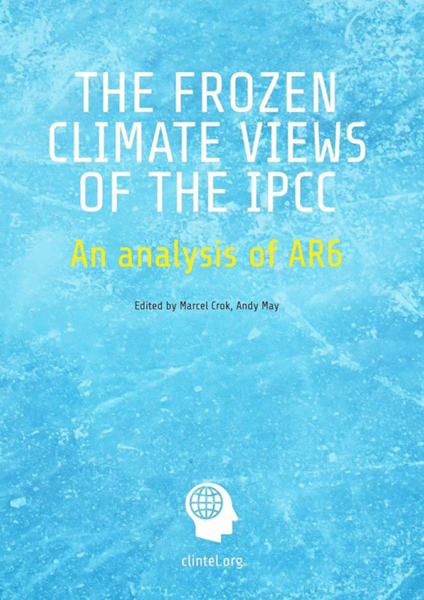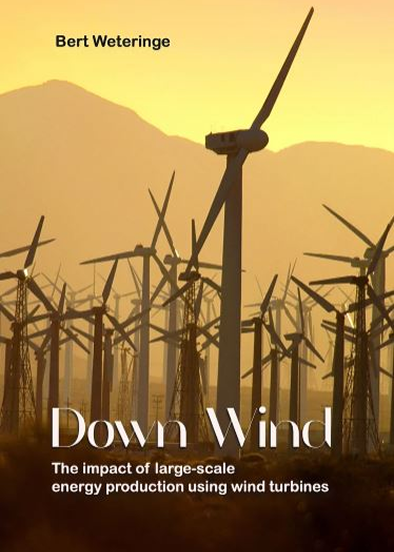Trump’s energy agenda: beware of government overreach
Rather than ‘invest’ American tax-payer dollars in ‘green R&D’, it may well be more appropriate for government departments to offer tax credits to the private sector to pursue their own lines of R&D, says economist dr. Tilak K. Doshi. A version of this article was published in The Daily Sceptic.
President Trump has made it clear by his executive orders from the first day in office that he prioritizes reliable and affordable energy over climate alarmist ideology. He ditched the Paris climate agreement, axed the Biden electric vehicle mandate, prioritized fossil fuels and related infrastructure development and halted the leasing and permitting for wind energy projects.
Among energy realists not beholden to the cult of climate alarmism, the praises for President Trump’s flurry of executive orders after inauguration on January 20th were fulsome. Myron Ebell, chairman of the conservation group American Lands Council, remarked that “President Trump has not wasted any time to undo Biden’s many climate policies designed to make energy more expensive and less affordable. America and the world can look forward to a brighter future because of the actions that President Trump has started on his first day in office.”
Marc Morano, executive editor of the contrarian website for energy and environmental affairs Climate Depot, was even more emphatic in an interview about the potential impact of President Trump’s second term. It “could become one of our lifetimes’ most consequential presidencies. Trump is poised to once and [for] all put a stake through the heart of the UN globalist climate change scam. The Trump Effect is already derailing the UN climate summits, canceling EV mandates, disintegrating the Wall Street climate group, and Net Zero goals. Trump’s policies could have the effect of collapsing the entire climate house of cards.”
Conservatives will find Trump’s reversals of the Biden administration’s “all-of-government” policy agenda focused on “combatting climate change” and “environmental justice” a healthy Schumpeterian process of creative destruction to set free America’s capacity for capitalist growth and human flourishing.
But should President Trump’s role be limited to undoing the previous administration’s Green New Deal policies? Should his administration’s energy and environmental policy initiatives be restricted to removing the constraints on the development of fossil fuel resources? Is it enough to discontinue government mandates and subsidies lavished on favoured technologies such as wind and solar energy, electric vehicles, batteries, “green” hydrogen and carbon capture and storage?
Or does his agenda for “energy dominance” suggest an activist role for government which goes beyond removing over-reaching regulations and the dead hand of green ideology which have suffocated the creative energies (no pun intended) of American entrepreneurs?
The Siren Song of “Energy Innovation” and “Green Energy R&D”
In an opinion piece with Fox News, Bjorn Lomborg supports President Trump’s plans to use America’s vast energy resources to re-assert its dominance and to increase needed cheap power supplies for growth industries in AI, cloud computing and data servers. But, he contends, “[t]he one ingredient his energy policy lacks is investments in innovation…the new administration should invest more in clean energy research and development to help unlock American innovation. Long-term innovation is great for society but often suffers from severe underinvestment from private corporations since it is hard to recoup all the benefits.”
Steve Koonin, a theoretical physicist and previous Under Secretary for Science, Department of Energy in the Obama administration, also finds much to support in President Trump’s turn away from the predilections of climate alarmism that afflicted the Obama and Biden administrations. In a recent opinion article in the Wall Street Journal, Mr. Koonin advises the Trump administration on the “right way” to exit the Paris climate agreement. He observes that by providing affordable and reliable energy, no matter the source, the US “would do far more good for humanity than discouraging fossil fuels based on fear of some vague climate catastrophe.”
Like Lomborg, Koonin asserts that renewed commitment to developing “cost-effective clean technology around the globe could be the final element of Mr. Trump’s productive withdrawal [from the Paris climate agreement].” Small modular fission reactors and better batteries are cited as examples of clean technology.
To be sure, neither Lomborg nor Koonin suggests that the Trump administration should “subsidize or mandate the deployment of immature or ineffective technologies—such as offshore wind farms, residential heat pumps and electric cars that nobody wants.” So, what exactly should governments do to develop these “cost-effective clean technologies” that both experts speak of?
Mr. Koonin’s advice to US and European governments to follow Xi Jinping’s China model to “build the new before discarding the old” is preciously thin on detail. To be fair, an op-ed cannot be expected to provide a blueprint for what is being suggested. But the question remains, just what precisely is being suggested?
Mr. Lomborg — who agrees with many of his critics that there is a climate problem but asserts that it is a manageable one and “nothing like the end of the world” – has consistently advocated government investments in green R&D. He even cites studies that purport to show that “every dollar invested in green R&D could prevent $11 in long-term climate damages, making it arguably the most effective global climate policy available.”
Governments Don’t Pick Winners, Losers Pick Governments
The history of government involvement in the development of shale natural gas resources has been used to justify substantial government involvement in other forms of energy technology. Despite long held assumptions of the US running out of oil and gas, it emerged as a powerhouse of new oil and gas production with the remarkable shale revolution after the turn of the millennium which involved hydraulic fracturing, horizontal drilling and advanced earth imaging. The country quickly achieved its status as the world’s leading oil and gas producer outranking both Saudi Arabia and Russia.
Legendary oilman George Mitchell, one of the key players behind the innovation that made such a dramatic change in the trajectory of US oil and gas production, did indeed benefit from partnership with scientists and research institutes of the federal government.
Yet, the historical record of governments successfully ‘picking winners’ is a skimpy one. That of cozy business-government relations (‘cronyism’ is a better word) in pursuit of pet “green” causes – one can’t improve on “saving the planet” – is a rich one.
The US Department of Energy’s $535 million failed loan to the solar-panel manufacturer Solyndra during President Obama’s administration is just one instance of the more scandalous examples of renewable energy subsidies that lost tax-payers’ money. Last week, news emerged that the Ivanpah solar power project, one of the most expensive green energy projects ever undertaken in American history, costing $2.2 billion to build, will likely declare bankruptcy “after eating up massive amounts of taxpayer dollars and killing thousands of birds”.
Benjamin Zycher of the American Enterprise Institute put the promise of the solar power project in California’s Mojave Desert this way:
It was the future. It would demonstrate how to save the planet. It would produce electricity clean and cheap and immune to the vagaries of international shifts in prices, interest rates, currency exchange values, and the caprice of foreign governments. It was a demonstration of the massive achievements possible from public/private “partnerships,” that is, central planning American style.
After 10 years of high costs and poor performance despite the promises and confident projections by the US Department of Energy and its private sector partners, the Ivanpah plant will shut, another testimony to the failure of government bureaucrats picking winners.
President Trump and His Lieutenants Should Tread Carefully
To help chart his course in energy and environmental issues, President Trump has chosen his key nominees wisely and all have been confirmed. Chris Wright, a seasoned executive in the fracking industry, is the Secretary of Energy; Lee Zeldin is Administrator of the Environmental Protection Agency and Doug Burgum is Interior Secretary.
Tom Pyle, President of the American Energy Alliance, issued the following statement on the confirmations:
Today marks a pivotal moment in our efforts to unleash American energy and strengthen our nation’s energy economy. With the confirmation of Chris Wright, Lee Zeldin, and Doug Burgum, experienced and committed leaders now will be at the helm of critical agencies. Under their leadership, we will continue to ensure that the United States remains the world’s energy superpower, providing jobs, security, and economic growth for all Americans.
These key members of the Trump administration would likely agree that the fundamental role of government is to support private entrepreneurs, to unleash their “animal spirits” in their areas of business expertise. Rather than “invest” tax-payer dollars in “green R&D”, it may well be more appropriate for government departments to offer tax credits to the private sector to pursue their own lines of R&D.
It is not likely that government-funded agencies will play a prescient role in technological or commercial developments in energy efficiency or “green energy”. It would be naïve to expect a government salariat to have superior instincts in promoting new energy technologies. Perhaps the best advice President Trump’s team can give to their respective departments is “don’t just do something, sit there.” Let them not be waylaid by the siren songs of government overreach.
Perhaps the last word belongs to the great sage of political economy, Adam Smith, who said 270 years ago that:
Little else is requisite to carry a state to the highest degree of opulence from the lowest barbarism, but peace, easy taxes, and a tolerable administration of justice: all the rest being brought about by the natural course of things.
(A version of this article was published in The Daily Sceptic https://dailysceptic.org/2025/02/09/president-trumps-energy-and-climate-agenda-beware-of-overreach/ )
Dr Tilak K. Doshi is an economist, a member of the CO2 Coalition and a former contributor to Forbes.
Picture: The Sirens and Ulysses, 1837 (By William Etty – Art UK, Public Domain) https://commons.wikimedia.org/w/index.php?curid=30235077
more news
Rationality Returns to Australia as Climate Scare Wanes
Australia’s green energy experiment has left millions of its citizens with a shaky power grid, serving as a case study on how blind allegiance to climate dogma leads to economic and social turmoil.
Former Czech President Václav Klaus appointed President of Clintel
Former Czech President Václav Klaus appointed President of Clintel The Climate Intelligence Group (Clintel) is honoured to announce that Professor Václav Klaus, the former President of the Czech Republic, from today on will be the new president of Clintel, succeeding the current president, Professor Guus Berkhout, who co-founded the Clintel Foundation in [...]
Ignoring EV Pollution for Fake Climate Crisis
The silent, gleaming chassis of an electric vehicle (EV) glides through a pristine forest or a spotless, futuristic city. The message is simple: The driver is saving the planet. It is a narrative built on a convenient, calculated omission.






